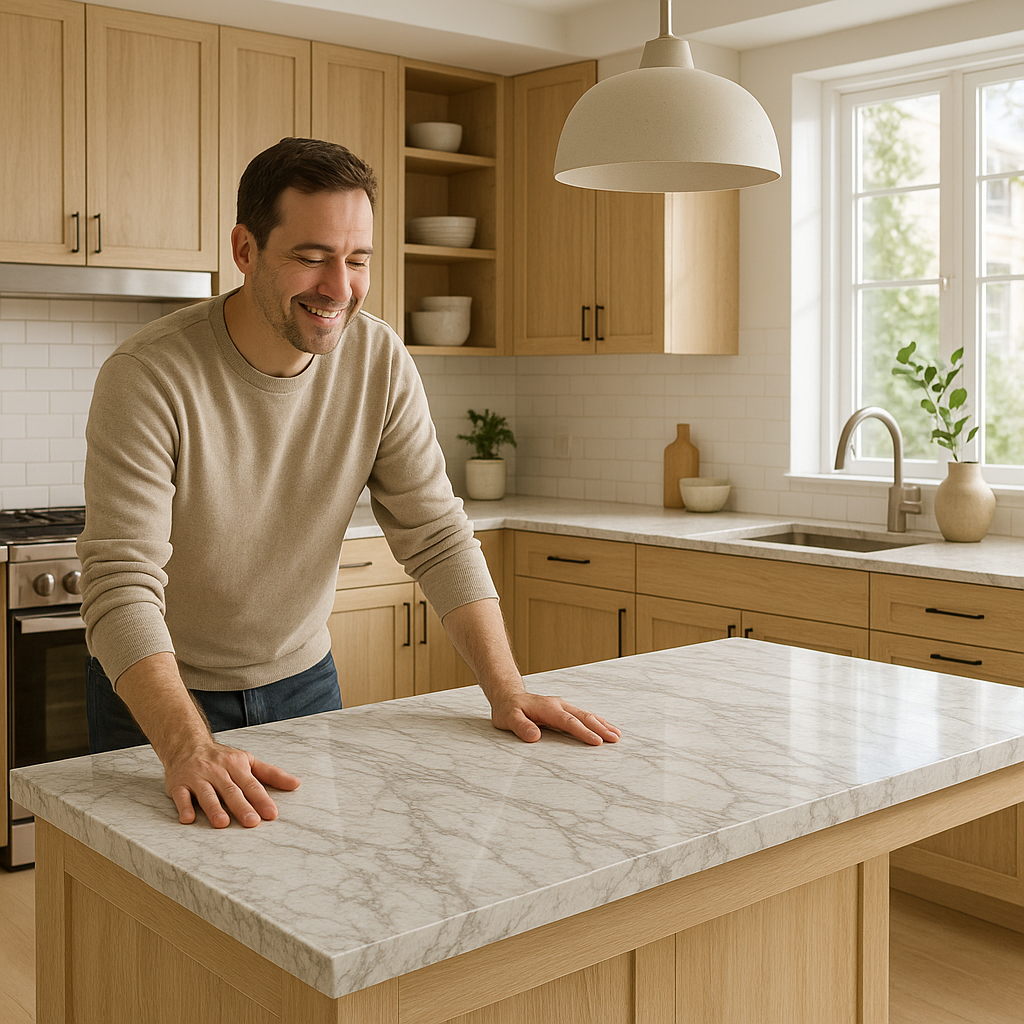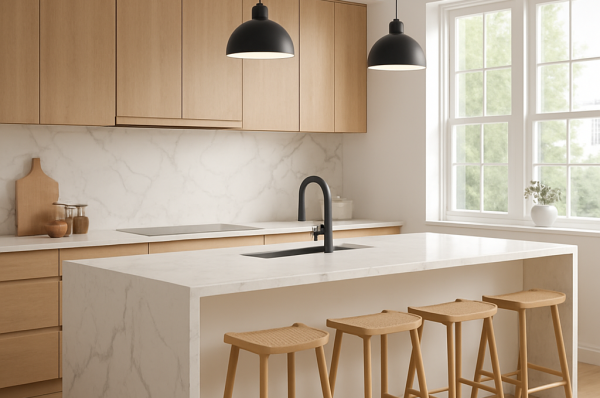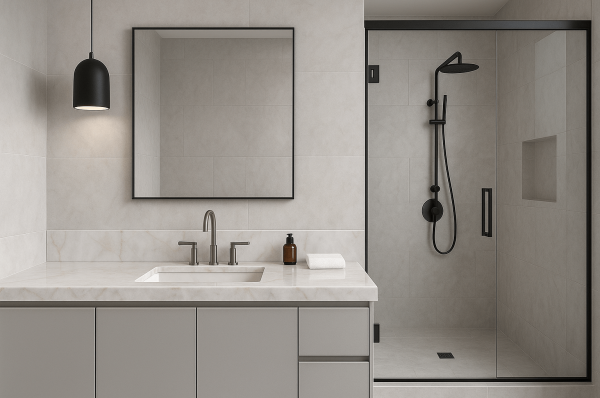Choosing the right countertop can completely transform your kitchen or bathroom. From sleek quartz and durable granite to unique quartzite and timeless marble, the right stone surface adds function, style, and value to your home. But while selecting a beautiful slab is exciting, the installation process is just as important — and mistakes made along the way can cost you time, money, and long-term satisfaction.
Whether you’re a homeowner planning a remodel or a contractor striving for flawless results, understanding the most common countertop installation mistakes is essential. In this post, we’ll cover five of the most frequent errors in countertop fabrication and installation, explain why they happen, and provide expert tips to avoid them.
1. Poor Measurements and Inaccurate Templates
Why This Mistake Happens:
Countertops must be custom-fit to your specific space. Even small errors in measurement can lead to gaps, misaligned seams, or overhangs that don’t match cabinetry. This mistake often happens when measurements are rushed, when DIY templates are inaccurate, or when homeowners provide dimensions without professional verification.
How to Avoid It:
- Hire professionals for templating. Professional fabricators use laser templating or digital measuring tools to ensure precision.
- Double-check all dimensions. Don’t just measure once — measure multiple times and compare results.
- Account for sinks, faucets, and appliances. Cutouts and clearances need to be factored into the template from the start.
Pro Tip: Always review the digital template or cardboard mockup with your countertop contractor before fabrication begins. This ensures everyone is aligned on the layout.
2. Choosing the Wrong Material for the Application
Why This Mistake Happens:
Homeowners often fall in love with the beauty of a stone without considering how it will perform in their daily lifestyle. For example, marble is elegant but prone to etching and staining, while quartzite is tougher but may require sealing. Using the wrong material in high-traffic areas can lead to disappointment.
How to Avoid It:
- Assess your lifestyle. Do you cook often? Do you want a low-maintenance option? Families with kids may prefer quartz or granite over marble.
- Ask your fabricator about durability. A good stone contractor will explain the pros and cons of each material.
- Match material to room. For kitchens, durability is key. In bathrooms or laundry rooms, lighter-use marbles or softer stones may work beautifully.
Pro Tip: Bring home samples and test them. Place a sample on your existing counter, spill coffee, lemon juice, or wine, and see how it reacts when cleaned. This helps you make an informed choice.
3. Ignoring Seam Placement
Why This Mistake Happens:
Large slabs often require seams, especially in big kitchens or long runs of cabinetry. When seams are poorly placed or not aligned with the stone’s veining, they can look obvious and disrupt the flow of the countertop. Homeowners sometimes overlook this detail until it’s too late.
How to Avoid It:
- Plan seam placement early. During the templating phase, discuss where seams will fall.
- Request a vein-matching layout. A skilled fabricator can book-match or line up veining patterns to create a seamless appearance.
- Consider slab size. If possible, select larger slabs to minimize the need for seams altogether.
Pro Tip: Ask your contractor to show you a digital layout of how your slabs will be cut and installed. This preview allows you to approve seam placement before fabrication.
4. Skipping Proper Support and Reinforcement
Why This Mistake Happens:
Countertops, especially natural stone, are heavy. Large overhangs on islands or areas around sinks can be vulnerable to cracks or breakage if not properly reinforced. Some contractors may cut corners by skipping brackets or supports.
How to Avoid It:
- Follow support guidelines. As a rule of thumb, any overhang greater than 10–12 inches should be reinforced.
- Use steel brackets or corbels. These provide hidden but strong support.
- Check cabinet strength. Ensure your base cabinets are level and sturdy enough to handle the weight of stone.
Pro Tip: Ask your fabricator what reinforcement methods they recommend for your particular material and layout. Investing in support upfront saves costly repairs later.
5. Hiring Inexperienced Countertop Contractors
Why This Mistake Happens:
Countertop installation looks simple, but it requires specialized tools, precision, and craftsmanship. Homeowners sometimes choose the lowest bid or attempt DIY installation, only to face cracked slabs, uneven seams, or long-term performance issues.
How to Avoid It:
- Research countertop contractors. Look for companies with proven experience in stone fabrication and installation.
- Read reviews and ask for references. Past customers can give insight into quality and professionalism.
- Ask about certifications. Many fabricators belong to industry associations that uphold standards.
Pro Tip: Remember that the cheapest option is not always the best. Quality craftsmanship ensures your countertops look beautiful and perform well for decades.
Final Thoughts: Get Countertops Right the First Time
Countertop installation is more than just putting stone on cabinets — it’s a detailed process that requires careful planning, skilled fabrication, and precise installation. Avoiding these five common mistakes ensures your investment looks stunning and lasts for years to come.
If you’re planning a kitchen or bathroom remodel, don’t leave your countertops to chance. Work with experienced countertop contractors who understand stone fabrication inside and out. From selecting the right material to ensuring flawless installation, professionals help you sidestep costly errors and enjoy a seamless upgrade.




